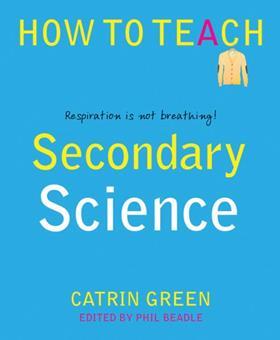Catrin Green shares some ideas for making lessons more meaningful for secondary students

All students need a good understanding of science before they leave our schools, from those who will need it to make informed decisions on energy providers to those who may become chemistry professors.
But a report published earlier this year (pdf) found that during secondary school interest in science and maths drops by 53% for girls and 42% for boys. This coincides with the curriculum’s focus moving from the bigger picture into the more abstract, microscopic world.
Ensuring science remains as relevant to our older students as it was for them at primary school is important in order to stop them from being turned off the subject.
The big picture
By incorporating context and personal interest into our planning we can make science relevant to all our students. Grounding lessons within the bigger picture is crucial: we’re all a little guilty of diving straight into a topic, forgetting what has come before and why students are learning the content in the first place.
The simplest way of ensuring this happens every day is to change your lesson title. Instead of a lesson called ‘The atom’ try ‘What are we really made of?’ or ‘What is the smallest thing we know?’. Or instead of ‘Hydrogen bonding’, try ‘Why does ice float?’. By doing this we not only make what we teach interesting but also worth knowing.
Start lessons by checking what your students already know, particularly with Year 7 classes – many teachers underestimate how much they already know. Use photos or props to spark interest and remind students of previous learning. Try to get feedback from as many students as possible.
The story
A Wellcome Trust survey from 2011 (pdf) looked into young people’s views of science. It found that students identify most with the curriculum when they are engaged in lessons that are relevant to their lives.
A nice way to engage interest is by using stories to hook students’ imaginations. Brian Cox and other TV personalities always use this method to grab attention and it works just the same in the classroom.
To make teaching lab safety more exciting tell the tale of how the inventor of the Bunsen burner, Robert Bunsen, lost his right eye in a lab explosion. Students love to hear about Avogadro’s failed attempt to convince the scientific community about his findings (especially as he is often a hated figure among students) and have great empathy for people who have died as the result of carbon monoxide poisoning.
The two-way lesson
A common view among students is that science is a subject of facts that need to be learned. This in part is because of the way it is often taught – knowledge is taught first with context then discussion, with future research an afterthought (or sometimes not even touched upon).
Try introducing new topics by collaborating more with the class through discussion and debate. This will engage students who may not be so interested in how things work but who are fascinated with ethics (as most teenagers are).
Finish lessons with a ‘question box’ for students to add to on a post-it note and then go through the best in the next lesson.
Future proof
One of the best ways to make our subject worthwhile for our students is to show how it will be useful to them in the future. The Wellcome Trust survey stressed the importance of a ‘perception of applicability’, so keep this a focus of all lessons.
When teaching chemical reactions, make honeycomb with the class and go through the chemistry of cooking. Turn lessons on extracting metals into a workshop where students act as product developers and have to choose the best metals based on applicability, extraction and price.
Don’t forget to keep the science open – make sure students know how much more development there needs to be at the cutting edge of science, from developing nuclear fusion to designing new batteries for our mobile phones.

Most importantly …
Know your students well – where their interests lie, how much they already know and what they want to do in the future (being mindful not to stereotype).
Context is great for hooking students, but also make sure they are learning. Students will always enjoy the subject if they feel successful.
Catrin Green is a deputy head, former head of science and author of How to teach: secondary science from Crown House Publishing









2 readers' comments